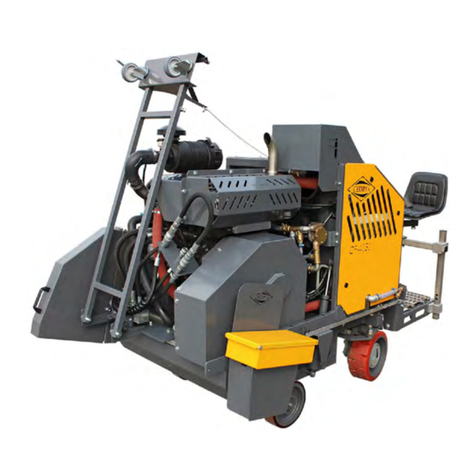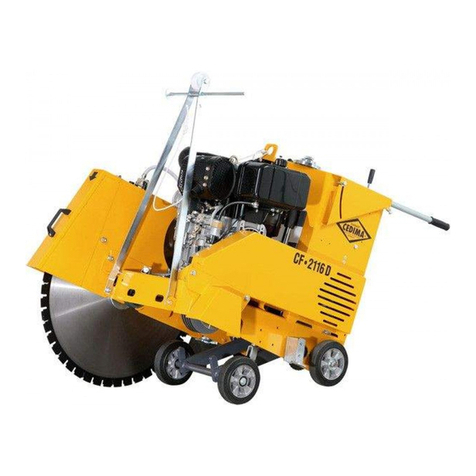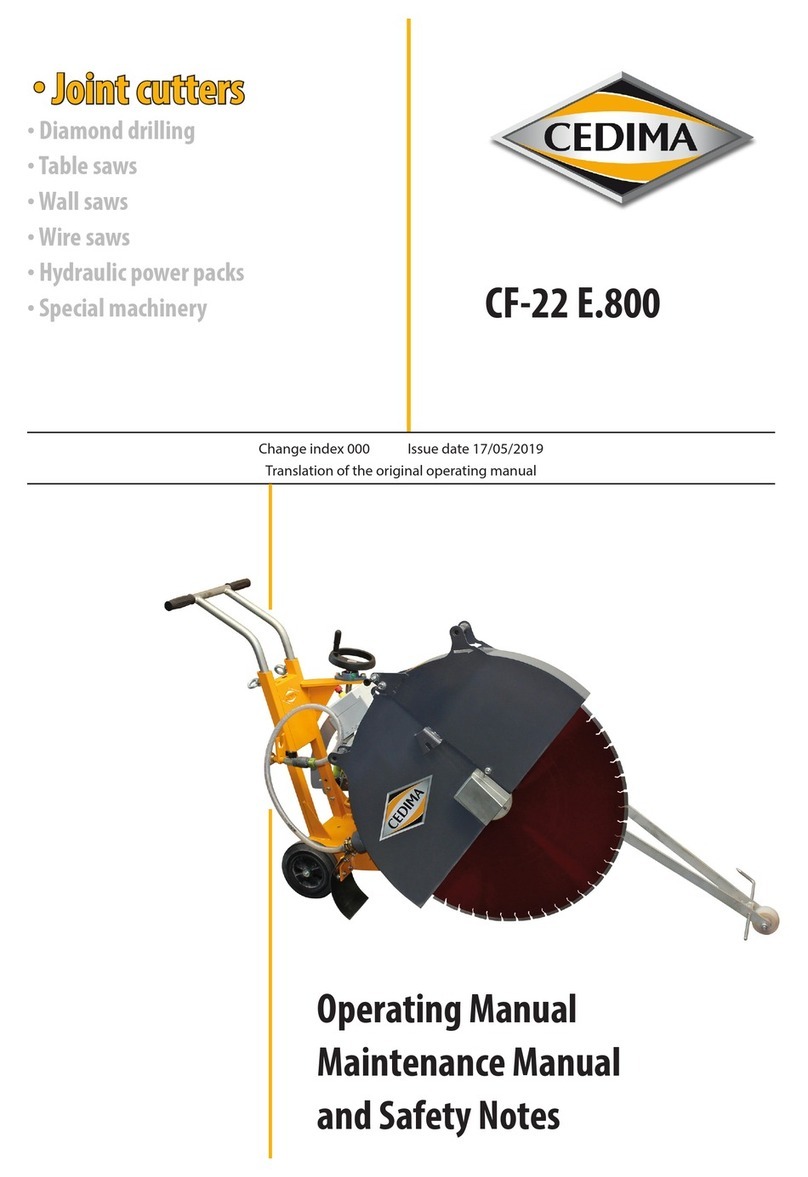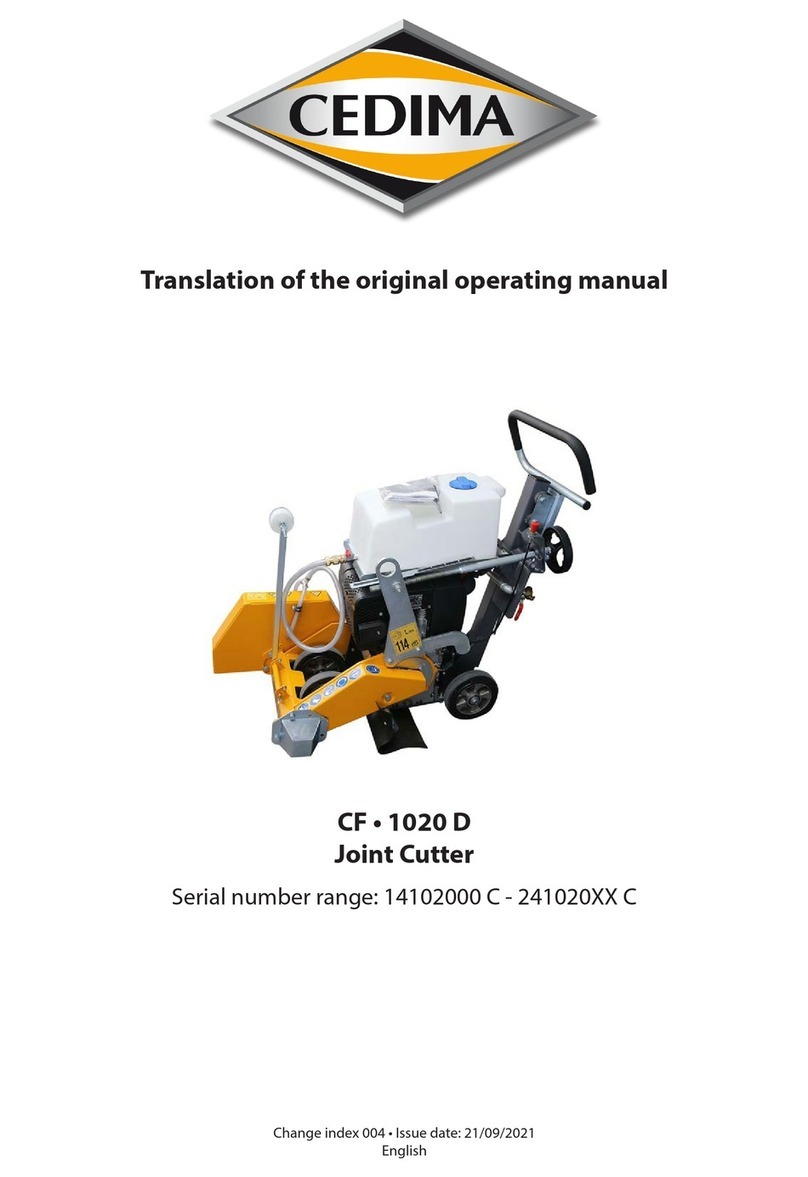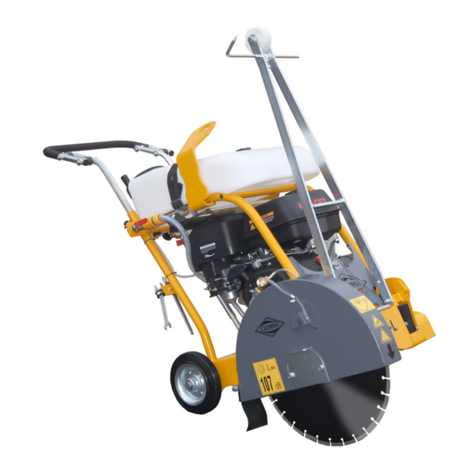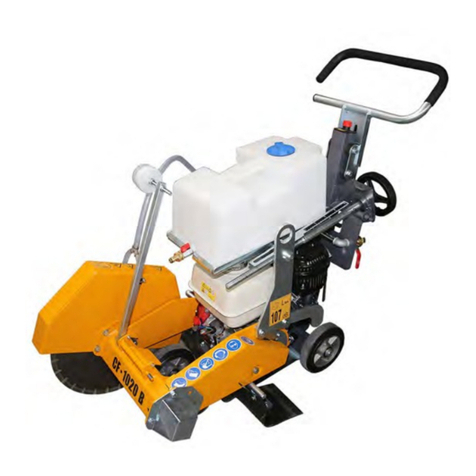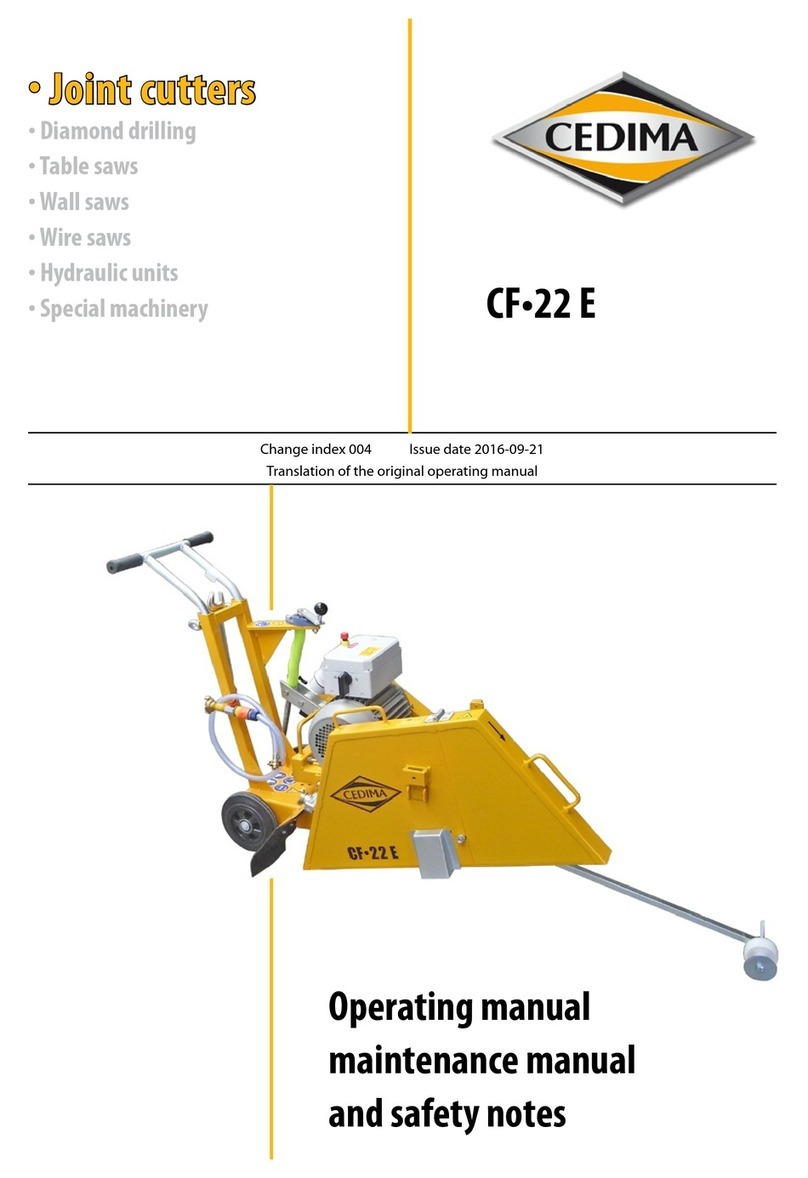
ENGLISH
• CEDIMA® • Technical Documentation • All rights reserved as per DIN 34 • Subject to modifications due to progressive development •
1-1
1.0 Technical specifications of the joint cutter CF-12.4 E-TR
Drive motor ..........................................................................................................electric motor
Engine output (power) ........................................................................................ 7,5 kW
Voltage ..................................................................................................................400 V / 50 Hz
Amperage ............................................................................................................. 16 A
Protection .............................................................................................................IP 54
Speed ....................................................................................................................2880 rpm
Starting device .....................................................................................................delta-wye reverse switch
Machine feed ........................................................................................................manual
Blade shaft speed ................................................................................................2530 rpm
Saw blade holder side .........................................................................................right (in feed direction)
Saw blade Ø max. ................................................................................................ 350 mm
Saw blade Ø min. .................................................................................................300 mm
Saw blade holder length max. ............................................................................ 15 mm
Only laser-welded diamond saw blades with 80 m/s permission!
Cutting depth max. .............................................................................................. 120 mm
Drive pin Ø ...........................................................................................................8 mm
Blade mounting Ø ................................................................................................25,4 mm
Dimensions
Length x width x height ...................................................................................... 950 x 460 x 1000 mm
Transport dimensions without push handle ..................................................... 950 x 460 x 570 mm
Weight ...................................................................................................................96 kg
The connection with 50 mm outside Ø for the necessary (optional) professional-type vacuum cleaner is
placed at the front of the saw blade guard.
Required minimum suction power
Air quantity min. .................................................................................................. 240 m³
Filtering surface min. .......................................................................................... 1,5 m²
1.1 Sound ranging (as per DIN EN 31201)
CF-12.4 E-TR
Sound pressure level at the workplace 83 dB(A)
Sound power level 103,0 dB(A)
The sound ranging is made with static machine at nominal rotation speed with saw blade diameter of Ø 350 mm.
During cutting operation higher sound levels are possible to occur!
* See also manufacturer‘s operating manual.
1.2 Items supplied with the machine
1 x double open-ended spanner (wrench with) 17/24
1 x Operating manual
1 x Spare parts list
For further accessories please refer to the present CEDIMA®-price list.
CEDIMA® is not responsible for any damages resulting from the operation of accessories that do not
correspond to CEDIMA®’s specifications.
For information on the suitable type of CEDIMA® diamond saw blade please refer to the price list and the
product data sheet.
For special applications please ask CEDIMA® for advice.
Technical specifications and accessories






